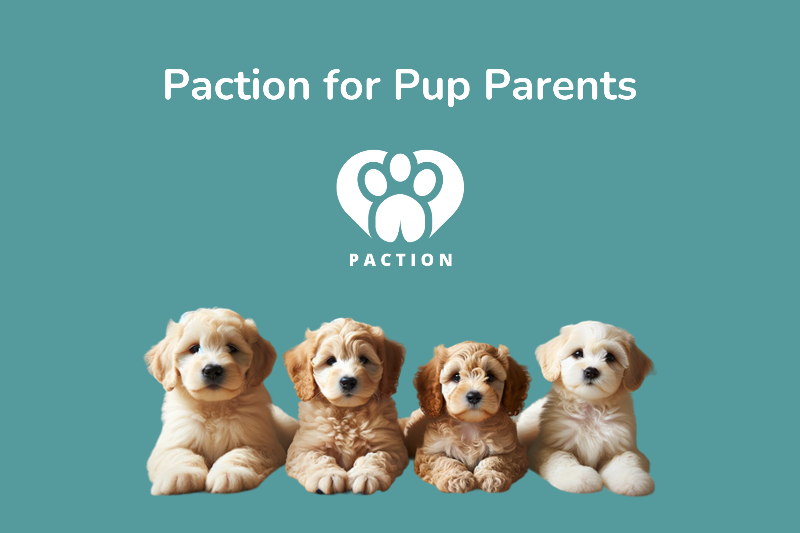Amanda Bloom | The "Transition Dog": How She is Breeding Companionship, Connection and Care with her German Shorthaired Pointers
Updated on Oct 8, 2025 7:36 PM UTC
When Amanda Bloom and her husband bought their first house, the exciting transition came with one other non-negotiable: they needed dogs. “We’re both dog people,” she states. “I couldn’t imagine living in a house without the infectious energy of a dog in our home too!”
So, like any responsible prospective pup parents, Amanda and her husband did their research. They even turned to dog shows to understand several different breeds. They finally discovered the perfect match: the German Shorthaired Pointer (GSP) - a breed that ticked every box.
“They’re athletic enough for our outdoor lifestyle in the country, but when they come inside, they become total cuddle bugs. They’re all-terrain dogs and velcro dogs all in one,” Amanda says. “And with short hair, there wasn’t all the excessive tumbleweeds of shedding to deal with.”
In 2011, the Blooms brought home two GSPs, Willow and Duke. What started as a personal love story with the breed quickly evolved into something more.
“It was magical,” Amanda says of her first whelping experience. “Truly the best experience of my life. I just knew this was something I was meant to do.” She bred for about two years but then took a break until 2025, due to something unexpected happening: In 2024, one of her original pup parents from more than a decade ago reached out, asking for another puppy. That single request reopened the door. Soon, multiple families from her first litters came forward, all saying the same thing: “Our GSPs are getting older and we’re ready for a new pup.”
That’s when Amanda noticed a theme. These families weren’t just getting another dog. They were planning for what she now calls “the transition dog.”
For Amanda’s latest litter, nearly every pup went to a home with a senior GSP. “It gave the entire litter a unique identity. It wasn’t just about cute puppies. It was about continuity, house hold well being, and ultimately planning ahead.”
She says the ideal age to bring a transition dog into your home is around 10 years old for a GSP. Although this breed often seems young and spry right up until the end of their life, “they age gracefully and keep very active, which can give a false sense of security,” Amanda warns. “But I had Duke pass suddenly at 11. Ten is a safer and appropriate age to embark on a transition pup. It is the age my puppy owners for this litter have recommended as well based on their long time experience with the breed. You don’t want to wait until health issues begin in your aging dog.”
Amanda’s beloved GSP Willow helped raise her two puppies and become what Amanda affectionately calls her “star pupil at puppy academy.” The pups followed Willow’s every move: finding the food bowls, learning their way around the house, copying commands, even picking up potty training faster.
“The learning curve was accelerated,” Amanda says. “My two new pointers learned 10 times faster just by mimicking Willow and were motivated to get the same treats she was getting. We were even able to leave them in our house unsupervised starting at 6 months old. That’s something no human trainer can replicate.”
“As dog parents, we’re just like human parents, but with one major difference: we expect to outlive our dogs,” Amanda says. “And nothing prepares you for that kind of grief, especially with your first dog.”
A transition dog can soften the blow. “You still have the same routines. There’s energy in the house. You’re forced to get up, feed, train, walk. You can’t just shut down. That puppy helps you move forward, even through the pain.”
Amanda’s not alone in this philosophy. She’s seen it firsthand in the families who have stayed in touch with her for more than a decade. And now, with this transition-themed litter, she is getting to see and experience first hand the profound impact getting a transition dog at the right time can have on families
“Being a breeder is incredibly meaningful,” she says. “These families are connected to us not just through their dogs, but through our dogs as the parents of the litter, Willow and Duke, my original GSPs and now Arley and Dexter. A piece of them and their legacy lives on in every pup.”
“If your dog is hitting 10, it’s time to think about what comes next and for certain breeds with shorter life expectancies, you should consider adding a new dog even sooner than that . Not just for you, but for them too. They can help guide that next little pup into your life, just like Willow did. Sometimes, the best way to prepare for goodbye… is to help love begin again!
So, like any responsible prospective pup parents, Amanda and her husband did their research. They even turned to dog shows to understand several different breeds. They finally discovered the perfect match: the German Shorthaired Pointer (GSP) - a breed that ticked every box.
“They’re athletic enough for our outdoor lifestyle in the country, but when they come inside, they become total cuddle bugs. They’re all-terrain dogs and velcro dogs all in one,” Amanda says. “And with short hair, there wasn’t all the excessive tumbleweeds of shedding to deal with.”
In 2011, the Blooms brought home two GSPs, Willow and Duke. What started as a personal love story with the breed quickly evolved into something more.
From First Litter to Full Circle
Amanda's in-laws were longtime breeders of Great Danes and Boston Terriers. Spending time with her mother-in-law during the whelping of litters sparked something deeper. After assisting with many litters, Amanda decided that along with her mother-in-law’s mentorship she was going to try breeding herself and Kemptville GSPs began.“It was magical,” Amanda says of her first whelping experience. “Truly the best experience of my life. I just knew this was something I was meant to do.” She bred for about two years but then took a break until 2025, due to something unexpected happening: In 2024, one of her original pup parents from more than a decade ago reached out, asking for another puppy. That single request reopened the door. Soon, multiple families from her first litters came forward, all saying the same thing: “Our GSPs are getting older and we’re ready for a new pup.”
That’s when Amanda noticed a theme. These families weren’t just getting another dog. They were planning for what she now calls “the transition dog.”
What Is a Transition Dog?
A transition dog is a new puppy introduced while your current dog is still alive—but aging. It’s not about replacing your beloved companion, Amanda explains. It’s about helping your next dog adjust while honoring the bond with your first.For Amanda’s latest litter, nearly every pup went to a home with a senior GSP. “It gave the entire litter a unique identity. It wasn’t just about cute puppies. It was about continuity, house hold well being, and ultimately planning ahead.”
She says the ideal age to bring a transition dog into your home is around 10 years old for a GSP. Although this breed often seems young and spry right up until the end of their life, “they age gracefully and keep very active, which can give a false sense of security,” Amanda warns. “But I had Duke pass suddenly at 11. Ten is a safer and appropriate age to embark on a transition pup. It is the age my puppy owners for this litter have recommended as well based on their long time experience with the breed. You don’t want to wait until health issues begin in your aging dog.”
Lessons from Willow: Puppies Learn Best from Peers
One of the most valuable upsides to a transition dog, Amanda says, is how much easier puppy training becomes.Amanda’s beloved GSP Willow helped raise her two puppies and become what Amanda affectionately calls her “star pupil at puppy academy.” The pups followed Willow’s every move: finding the food bowls, learning their way around the house, copying commands, even picking up potty training faster.
“The learning curve was accelerated,” Amanda says. “My two new pointers learned 10 times faster just by mimicking Willow and were motivated to get the same treats she was getting. We were even able to leave them in our house unsupervised starting at 6 months old. That’s something no human trainer can replicate.”
Healing Hearts and Easing Grief
The greatest benefit of all, Amanda believes, is the emotional and mental health benefits of a transition dog for dog owners.“As dog parents, we’re just like human parents, but with one major difference: we expect to outlive our dogs,” Amanda says. “And nothing prepares you for that kind of grief, especially with your first dog.”
A transition dog can soften the blow. “You still have the same routines. There’s energy in the house. You’re forced to get up, feed, train, walk. You can’t just shut down. That puppy helps you move forward, even through the pain.”
Amanda’s not alone in this philosophy. She’s seen it firsthand in the families who have stayed in touch with her for more than a decade. And now, with this transition-themed litter, she is getting to see and experience first hand the profound impact getting a transition dog at the right time can have on families
“Being a breeder is incredibly meaningful,” she says. “These families are connected to us not just through their dogs, but through our dogs as the parents of the litter, Willow and Duke, my original GSPs and now Arley and Dexter. A piece of them and their legacy lives on in every pup.”
Thinking Ahead
Amanda’s advice to future pup parents? Don’t wait too long.“If your dog is hitting 10, it’s time to think about what comes next and for certain breeds with shorter life expectancies, you should consider adding a new dog even sooner than that . Not just for you, but for them too. They can help guide that next little pup into your life, just like Willow did. Sometimes, the best way to prepare for goodbye… is to help love begin again!


